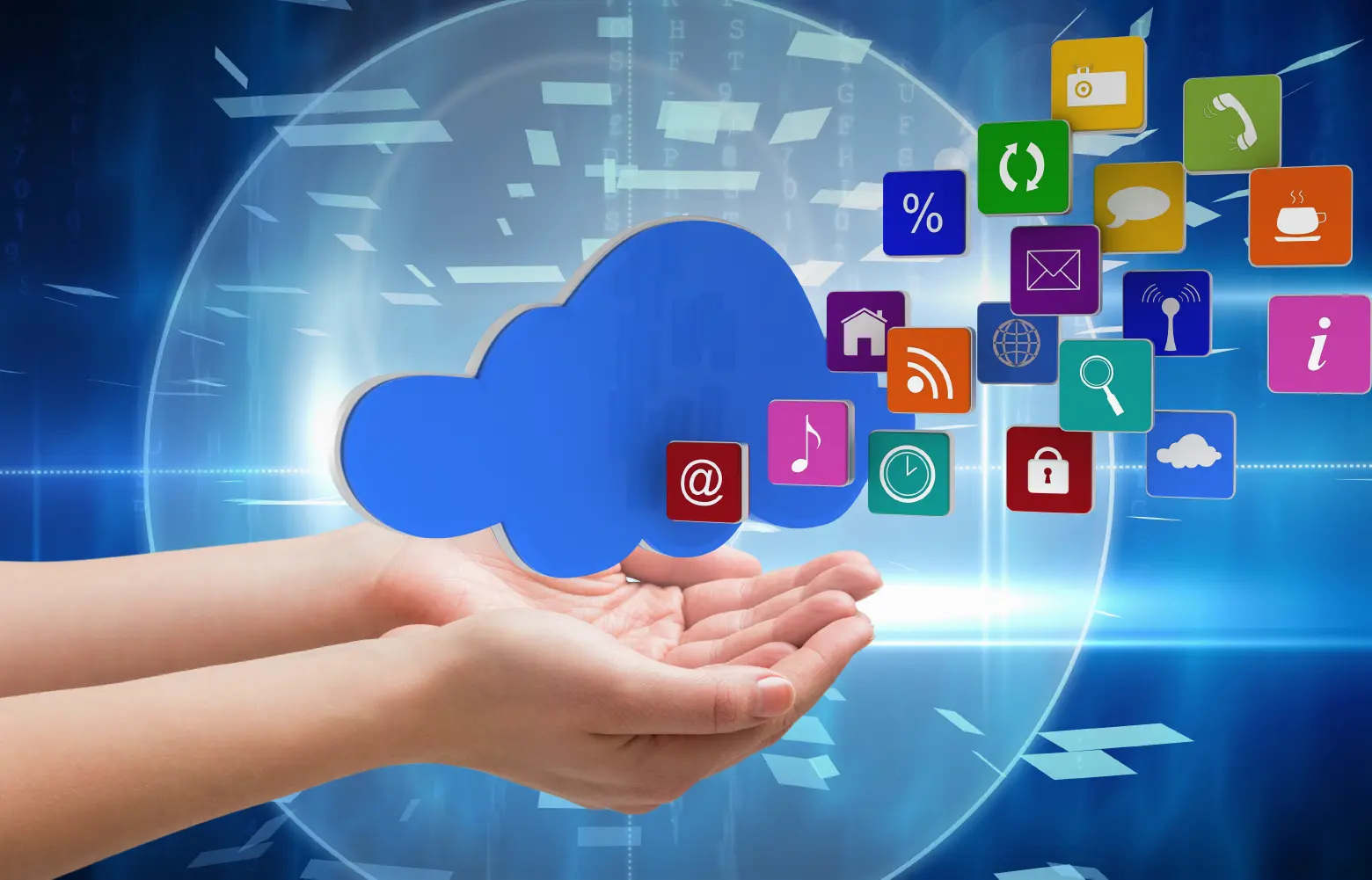In today’s digital age, businesses are rapidly adopting new technologies to streamline their operations, reduce costs, and increase efficiency. One such technology that has gained tremendous popularity in recent years is cloud computing models. Cloud computing has transformed the way businesses operate, enabling them to access computing resources on-demand over the internet, without the need for physical hardware and infrastructure. In this article, we will discuss the different types of cloud service models, their infrastructure and characteristics, and how businesses can find the right model for their desired outcomes.
What are the Cloud Service Models?
The cloud service model enables the team to collaborate online instead of offline creation and then share online. SaaS, PaaS, and IaaS are the three major types of cloud computing service models.

Get curriculum highlights, career paths, industry insights and accelerate your technology journey.
Download brochure
Why your business needs Cloud computing model:
Cloud computing is essential for businesses of all sizes. Here are some cloud computing benefits including:
- Scalability: Cloud computing enables businesses to scale their computing resources up or down as per their needs, without the need for additional hardware or infrastructure.
- Cost savings: Cloud computing eliminates the need for businesses to invest in expensive hardware and infrastructure, reducing capital expenditure significantly.
- Flexibility: Cloud computing offers businesses the flexibility to access their computing resources from anywhere in the world, enabling remote work and collaboration.
- Reliability: Cloud service providers offer robust security and backup measures, ensuring that businesses can access their data and applications anytime, anywhere.
Types of Service Models of Cloud Computing:
Now that we have understood what are cloud service models, let’s look at the major types of cloud service model in detail.
The service models of cloud computing are divided into three categories: Infrastructure as a Service (IaaS), Platform as a Service (PaaS), and Software as a Service (SaaS). Let’s take a closer look at each of these models.
IaaS | Infrastructure as a Service and it’s Characteristics:
This type of cloud service model is the most basic service model of cloud computing, which provides businesses with virtualized computing resources over the internet. With IaaS, businesses can access computing infrastructure, such as servers, storage, and networking equipment, on-demand, without the need for physical hardware.
The IaaS cloud service models offer businesses the flexibility to customize their infrastructure to meet their specific needs, enabling them to scale their resources up or down as per their requirements. However, businesses are responsible for managing and maintaining their applications and operating systems.
Examples of IaaS Cloud Service Model:
- Amazon Web Services (AWS): AWS is one of the largest IaaS cloud service model in the world, offering businesses access to a wide range of computing resources, including virtual machines, storage, and databases.
- Microsoft Azure: Microsoft Azure is another popular IaaS cloud service model that offers businesses access to a wide range of computing resources, including virtual machines, storage, and networking.
- Google Cloud Platform (GCP): GCP is a popular IaaS cloud service model that offers businesses access to computing resources, including virtual machines, storage, and databases.
(PaaS) |Platform as a Service and its characteristics:
PaaS is a type of cloud service models that provides businesses with a complete development and deployment platform over the internet. PaaS cloud service model offer businesses a complete stack of software and hardware components, including operating systems, middleware, and runtime environments, to develop, test, and deploy their applications. PaaS eliminates the need for businesses to manage their infrastructure, enabling them to focus on developing and deploying their applications quickly and efficiently. PaaS cloud service model also offer automatic scaling and load balancing, ensuring that businesses can handle increased traffic without any disruption.
Examples of PaaS cloud Service Model:
Some examples of PaaS Cloud service model include Google App Engine, Microsoft Azure, and Amazon Web Services (AWS) Elastic Beanstalk.
Software as a Service and its characteristics (SaaS):
SaaS is a type of cloud service model that provides businesses with access to software applications over the internet. With SaaS, businesses can access software applications such as CRM, ERP, and HRMS, without the need for physical hardware or infrastructure.
SaaS cloud service model offer businesses the flexibility to access their software applications from anywhere in the world, enabling remote work and collaboration. SaaS also eliminates the need for businesses to install and maintain software applications, reducing the IT overheads significantly.

Examples of SaaS applications:
- Salesforce: Salesforce is a cloud-based customer relationship management (CRM) software that enables businesses to manage their sales, marketing, and customer service operations from a single platform.
- Microsoft Office 365: Microsoft Office 365 is a cloud-based productivity suite that includes applications such as Word, Excel, PowerPoint, and Outlook, enabling businesses to access their documents and files from anywhere in the world.
- Dropbox: Dropbox is a cloud-based file sharing and storage service that enables businesses to store and share their files securely with their team members and clients.
- Zoom: Zoom is a cloud-based video conferencing software that enables businesses to conduct virtual meetings, webinars, and online events with their team members and clients.
Difference between service models of cloud computing IaaS, PaaS, and SaaS:
The main difference between these service models of cloud computing IaaS, PaaS, SaaS is the level of control and responsibility that businesses have over their infrastructure, applications, and data.
| IaaS |
PaaS |
SaaS |
| Virtual computing resources |
Complete development platform |
Access to software applications |
| Access to virtual storage and machines |
Offers runtime environment and deployment tools |
Offer software as services |
| Network architects |
Developers |
End users |
| Only infrastructure |
Infrastructure platform |
Infrastructure platform software |
How to Find the right model for the right business outcome:
Here are some general considerations that businesses should take into account when choosing a service models of cloud computing.

- Business needs and requirements: The service models of cloud computing chosen should align with the business’s specific needs and requirements. For example, if a business requires complete control over their infrastructure and wants to customize their applications, an IaaS model may be the best fit. However, if the business needs to develop and deploy their applications quickly without worrying about underlying infrastructure, a PaaS model may be more suitable.
- IT expertise and resources: The level of IT expertise and resources available within the business should also be considered. If the business has a dedicated IT team with expertise in managing and maintaining their infrastructure, an IaaS cloud service model may be the best fit. However, if the business does not have a dedicated IT team, a SaaS cloud service model may be more suitable, as it requires minimal IT resources.
- Budget: The cost of the cloud service model is another important consideration. Businesses should choose service models of cloud computing that is within their budget and provides the necessary features and functionality required to meet their business needs.
- Scalability: The cloud service model chosen should be scalable to meet the growing needs of the business. Businesses should choose a type of cloud service model that can easily scale up or down based on their changing needs.
Ultimately, businesses need to carefully evaluate their specific needs and requirements to determine which cloud computing model is best suited to their needs. It is also important to consider the potential benefits and drawbacks of each model, as well as any security and compliance requirements that may be necessary for the business.
FAQs
Software as a Service (SaaS) is currently the most widely used cloud service model. This is because SaaS provides businesses with access to software applications over the internet, without the need for businesses to install or maintain any hardware or software. SaaS applications are easy to use and can be accessed from anywhere with an internet connection, which makes them popular with businesses of all sizes. Also explore the major
types of cloud computing and know everything you need to know.
Apart from the three main cloud service models (IaaS, PaaS, and SaaS), there are other types of cloud service models that businesses may want to consider, depending on their specific needs and requirements. FaaS (Function as a Service) is a cloud computing model that enables businesses to develop and run custom applications without worrying about the underlying infrastructure. BaaS (Backend as a Service) is a cloud computing model that provides businesses with a pre-built backend infrastructure for developing and deploying mobile and web applications. DRaaS (Disaster Recovery as a Service) is a cloud computing model that provides businesses with a disaster recovery solution in the event of a system failure or disaster.
The Hero Vired Certificate Program in DevOps & Cloud Engineering is a top-tier course that will impart you with the requisite knowledge and skills for automating the application development life cycle on a secure and robust cloud infrastructure. Also explore Best cloud computing language that every developer must know. The cost-effectiveness of a cloud service model depends on various factors, including the size of the business, its requirements, and the type of workload it needs to run. Generally, Software as a Service (SaaS) is considered to be the most cost-effective types of cloud service model, as it eliminates the need for businesses to invest in hardware, software, and infrastructure.
Updated on December 19, 2024










